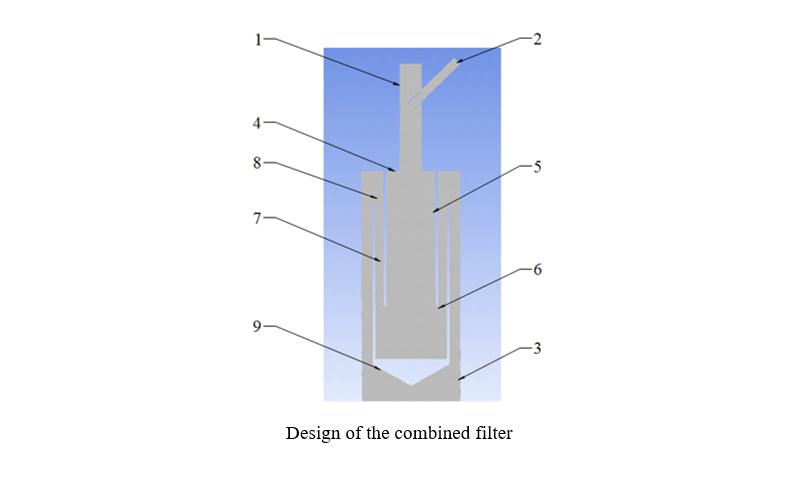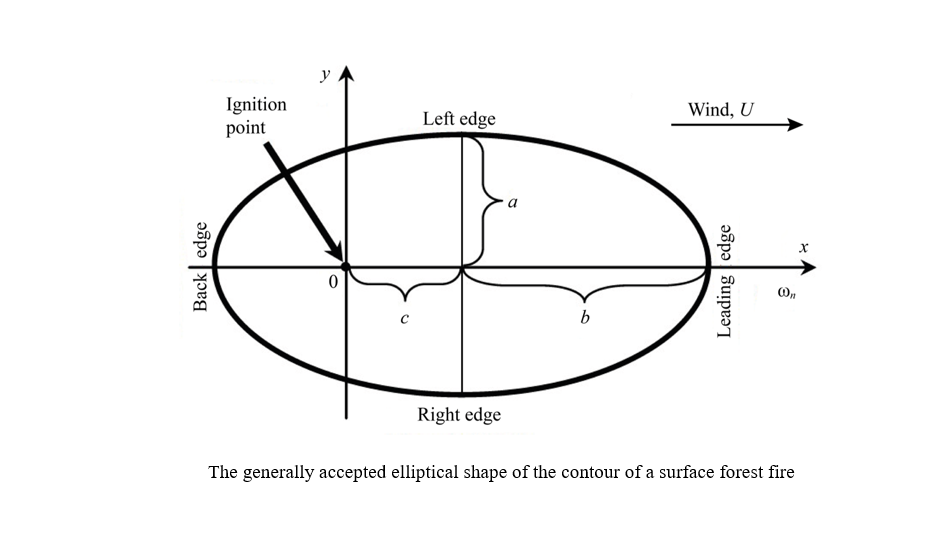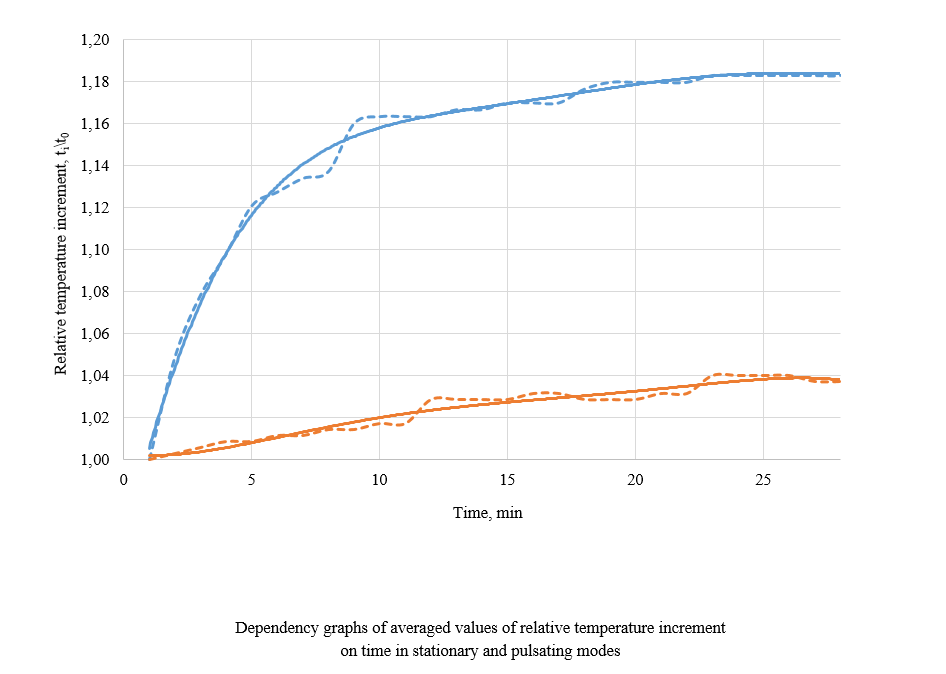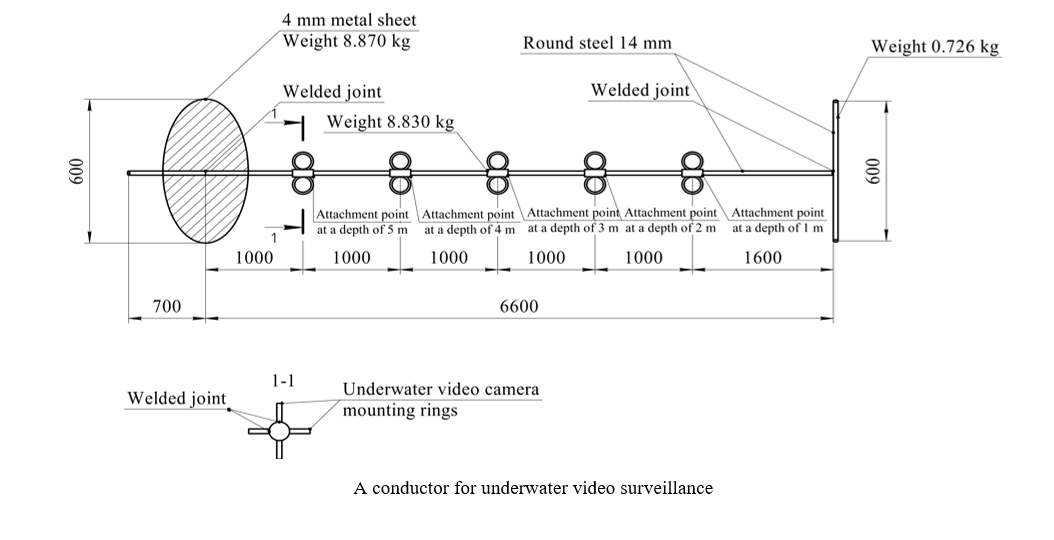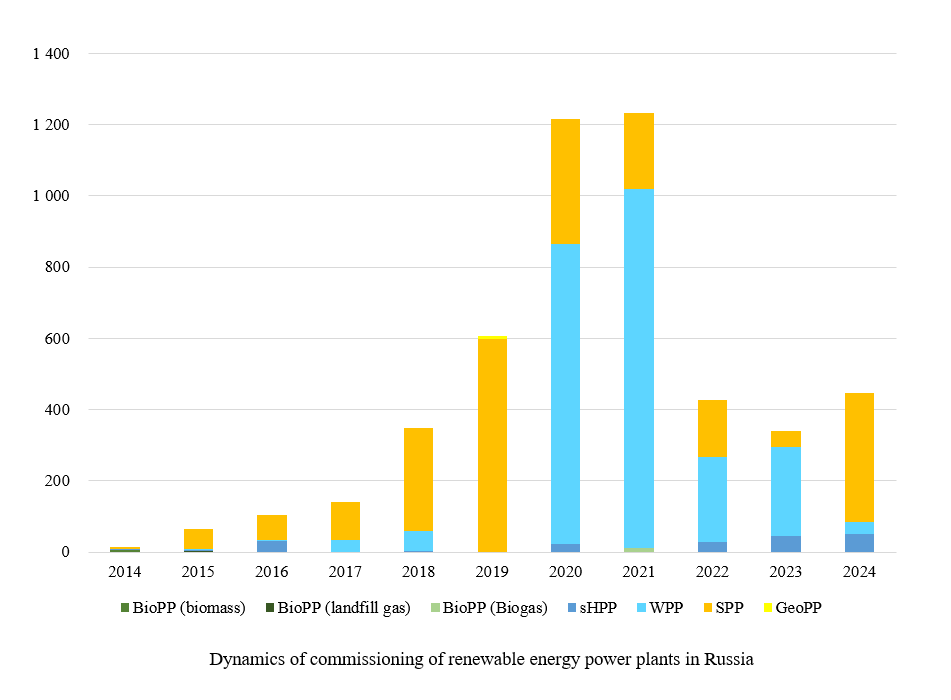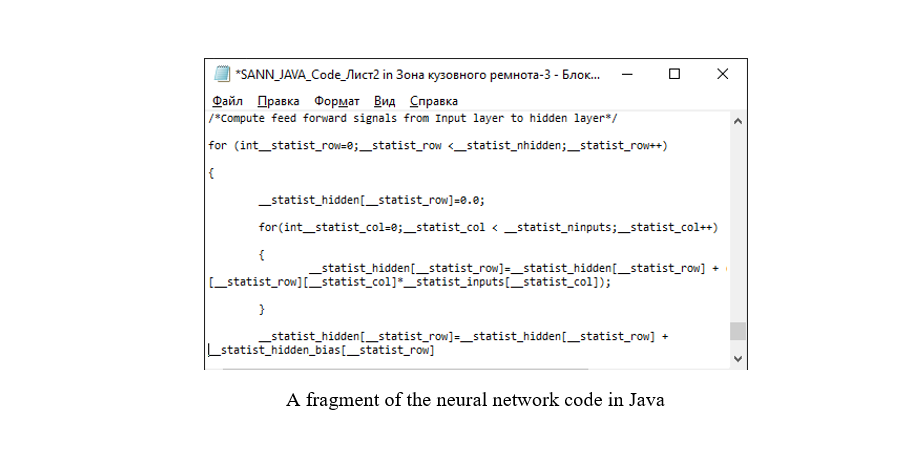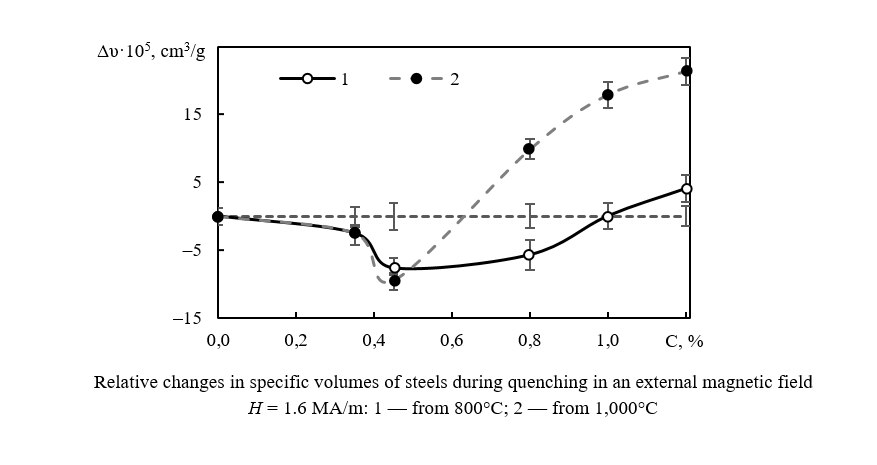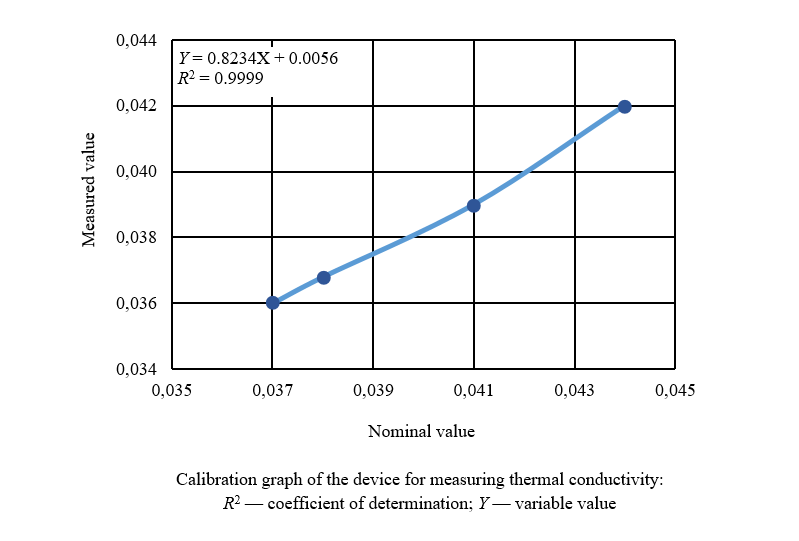TECHNOSPHERE SAFETY
Introduction. If wastewater treatment becomes less effective, the intensity of treatment facilities should be increased. Several approaches to solving this issue have been described in the literature. For example, to intensify the coagulation process, researchers have used controlled mechanical mixing of coagulants with effluents, mixing with air, and injecting the coagulant using jet or chamber mixers. The authors of this paper propose integrating a vertical clarifying filter (VCF) and a mixing chamber into one housing. This is a novel approach that eliminates the disadvantages of operating separate devices, such as the need for additional space, the possibility of forming aggregates close to the area where they are removed on filters, and avoiding breakage of flakes in connecting pipelines. Experimental evidence has previously demonstrated the effectiveness of this installation. The aim of this study is to develop a scientific methodology for calculating the combined filter, which is essential for widespread adoption.
Materials and Methods. The mixing efficiency of the fluidized bed was determined using the Camp criterion, which characterized the energy spent on mixing. Relevant publications on the subject were also taken into account. Special attention was paid to the description of coagulation. Before developing the calculation method, the authors conducted experiments and created a mathematical model of the installation. The operation of a combined filter with a mixing chamber consisting of a rapid mixing tank with a floating load and a settling tank was considered. The main initial data for the calculation method included: maximum wastewater flow rate, water viscosity, filter diameter, distance from load to housing, backwash intensity, and the volume of expansion of load during backwashing.
Results. The paper shows that the Camp criterion depends on various factors, including mass, area, contact time, and viscosity of particles in a fluidized bed. The calculation of the mixing chamber of the filter was based on this dependence. The regeneration of filters related to the efficiency of backwashing was taken into account. The method for calculating the mixing chamber was presented, and factors that could reduce the effectiveness of backwashing were discussed. As compensation, it was proposed to increase the intensity of backwashing or reduce the height of the filter layer. It was shown how to calculate the dimensions of the mixing chamber elements — the diameter and height of the tanks. A self-check was included in the calculation to avoid errors.
Discussion and Conclusion. For the first time, an improved combined filter design and a method for calculating it are described. The proposed approach makes it possible to determine the dimensions of the mixing chamber and ensure the necessary backwash efficiency. The new solution is of practical interest for enterprises that operate wastewater treatment plants with VCF.
Introduction. The scientific literature is actively discussing the topic of mathematical modeling of forest fires development to predict the speed of spread and area covered. From the perspective of turbulent processes, the height and deflection of fire, smoke, and hot air columns, as well as the spread of combustion particles and rational directions for extinguishing the fire, are evaluated. However, existing models do not provide a clear understanding of how turbulence occurs during the transition of a fire from a near-surface to an unsteady surface layer and higher. In other words, calculating the transition from ground fire to its more intense form remains a challenge. Addressing this gap is an urgent scientific and practical task. The aim of this study is to refine the equations of mathematical models for predicting the spread of forest fires, in order to better control these incidents, which will ultimately help reduce risks and damage from them.
Materials and Methods. To achieve this goal, we studied works covering different approaches, both theoretical and practical, devoted to the problem of predicting the development of fires. The works of D.L. Laikhtman, A.S. Gavrilov, and P.M. Matveev were accepted as the main ones. In addition to analyzing these literary sources, the authors applied statistical methods of information processing and used the possibilities of mathematical modeling.
Results. The generally accepted elliptical shape of the contour of a ground forest fire in the R. Rothermel model has been interpreted. Its disadvantages for predicting spot and intense crown fires have been demonstrated. The introduction of parameters such as relative humidity, terrain slope, surface roughness or viscosity, and features of the burning substance into the equation has been evaluated. The types of convection typical of spot and intense crown fires have been indicated: internal (thermal) and external (mechanical). The decision not to consider near-surface turbulence has been justified. To account for surface air layer turbulence, the authors have relied on the concepts of instability and corresponding physical laws. As a result, the basic formula of the R. Rothermel model was supplemented with a second layer so that it was possible to predict the development of a fire from a ground one to an intense crown fire. The dimensionless parameter of 0.397 was replaced by turbulence coefficient kz. This indicator was introduced into the corrected R. Rothermel equation and supplemented with the average Richardson number, which showed the relationship between temperature and the diffusion rate in neighboring layers. From these components, an updated formula has been developed. The results of simulations for typical cases of convective turbulence and fires, with and without turbulence, were presented in tables. Based on the summary data, we could conclude that the model developed within the scope of this work was adequate.
Discussion and Conclusion. When refining the semi-empirical R. Rothermel model for an unsteady surface layer, the introduction of a turbulence coefficient is justified. In addition, it is shown that it is necessary to supplement the single-layer model with second-level formulas characterizing the development of a fire in an unsteady surface layer. The adjusted model should more effectively predict the parameters of spot and intense crown fires. Further refinements of equations for semi-empirical forest fire models are promising, and it is advisable to continue research in this area.
Introduction. The issue of heat dissipation in metallurgy is significant due to potential hazards to personnel and the environment. Effective control and management of thermal processes require additional measures and can prevent fires, explosions, and personnel injuries as well as it is a key factor in ensuring the safety and reliability of metallurgical equipment. Metallurgical processes often involve high temperatures, but control over them is necessary for successful steel melting and processing. Current methods of heat transfer control (aeration, general exchange and local ventilation) do not always effectively reduce heat loads to acceptable levels. The choice of a pulsating ventilation mode for increasing the efficiency of heat transfer control is due to two main reasons: low air flow rates in large metallurgical production facilities, and the presence of numerous hard-to-reach areas with heat-generating equipment. The aim of this research is to investigate heat and mass transfer processes in areas with weak aerodynamic coupling with pulsating ventilation mode.
Materials and Methods. To achieve this goal, a method of physical modeling was employed to collect statistical data. Heat and mass transfer were evaluated by measuring temperature changes over time at various points in the model niche under different ventilation conditions (stationary and. pulsating). System analysis was then applied to process the collected data.
Research Results. It was found that pulsating air movement had a positive effect on heat and mass transfer in poorly ventilated spaces inside the laboratory setup. The degree of efficiency of this effect was determined, and it was found that the use of pulsating ventilation slowed down the increase in temperature in the center of the space by 3.8 times compared to the use of general forced ventilation.
Discussion and Conclusion. The data obtained under the simulated conditions of the aforementioned type of production provide a foundation for developing a more specific methodology to counteract the negative effects of heat radiation. This methodology could significantly enhance safety by improving the removal of excess heat in low-aerodynamic areas of mining and metallurgical workshops.
Introduction. In the near future, the issue of selecting appropriate methods to assess the effectiveness of fish protection devices (FPDs) will continue to be relevant. Previously, the necessary data could only be obtained by ichthyological studies, which involved using specific techniques and equipment. However, the introduction of a new edition of the Code of Rules SP 101.13330.2023 changed the situation and opened up the possibility of using sonar tools to determine the FPDs effectiveness. While there is a lack of public information regarding the specifics and potential of this approach, it is possible that underwater video surveillance may yield similar results to ichthyological (hydroacoustic) methods. This study aims to verify this hypothesis.
Materials and Methods. During ichthyological studies at the Zainskaya power plant, fish were captured using nets with mesh sizes of 10, 18, 20, 22, 30, and 70 mm. A Molchanov GR-18 bathometer was used to take phytoplankton samples. Zooplankton samples were collected by the Apstein network. Zoobenthos samples were collected using an automatic DAK-250 dredger. Underwater video surveillance was conducted using a Praktik Murena camera with a resolution of 720 HD (1280´720 pixels), which is equipped with built-in infrared illumination and displays information on a surface monitor. The camera has a wide-angle lens with a 130° viewing angle.
Results. A notable advantage of the proposed method, identified in the course of scientific research, concerned the sample size. With video surveillance, it turned out to be 2.25 times larger than with the traditional method. This was because video cameras captured more individuals than the number of fish caught in a net. A larger sample size provided a more statistically significant result. As the amount of data increased, the accuracy of the characteristics of the general population increased, and random error decreased. To determine the FPD efficiency coefficient (EC), the concentration of fish before and after the FPDs, as well as the survival rate of individuals after contact with the FPDs were taken into account. When using the traditional method in 2023, the average EC of the FPDs efficiency at on-shore pumping station No. 3 was 86.9%. Under the same conditions, the new approach proposed by the authors showed a similar average efficiency of 87.3%, with a difference of only 0.46%, which was completely insignificant. The maximum discrepancy was in the spring of 2023, where the indicator of the alternative method was 9.3% higher than the traditional one, while the minimum was noted in autumn at 0.1%.
Discussion and Conclusion. So, it was possible to confirm the hypothesis that the underwater video surveillance method is comparable in results with the ichthyological (hydroacoustic) method. However, the new approach is not yet legally recognized and can only be used as an additional tool. Firstly, video surveillance can help to determine whether ichthyological studies are necessary. Secondly, water intake operators can use the experimental method in between ichthyological surveys to obtain operational data on the effectiveness of FPDs.
Introduction. The issues of sustainable development, environmental protection and transition to a low-carbon economy remain relevant for countries worldwide, including the Russian Federation. In the context of global climate change and depletion of traditional energy sources, the need to develop "green" energy has become increasingly important. However, despite the presence of a certain potential, this sector in Russia is still underdeveloped, which is due to various economic, technological and legislative factors. There are numerous theoretical studies on renewable energy sources in the scientific literature, but many aspects of their functioning and development remain insufficiently explored. This scientific gap makes it difficult to fully understand the mechanisms and strategies for its further development.
In connection with the above, this study aims to analyze the current features and trends in the development of green energy in the Russian Federation. The study will also identify potential obstacles and opportunities for the expansion of green energy, as well as ways to overcome negative aspects of its functioning. The objectives of the authors of the study are focused on analyzing the priorities of public policy in Russia as a signatory to the UN Framework Convention on Climate Change, the Paris Climate Agreement, and the Kyoto Protocol on Reducing Greenhouse Gas Emissions, on determining the impact of public policy, technology and investment on the development of renewable energy sources, as well as on studying factors that can accelerate the country's transition to more sustainable energy models. The results of the study aim not only to fill a current gap in scientific knowledge, but also to provide the basis for developing recommendations that can help optimize energy policy in the country.
Materials and Methods. The authors analyzed legislative materials related to the topic of study. Statistical data on the types of energy capacities in the country over the past decade were used. The study was conducted based on regulatory and legal acts of the Russian Federation. Results from monitoring the implementation of government programs and strategies on the issue were also studied. Content analysis, structural and functional analysis were used as main research methods. The current state of affairs in the energy industry was presented based on the analysis of hierarchies, which was a set of elements, each of which reflected a specific step in achieving the goal.
Results. The clear growth of renewable energy sources (RES) use in the total global energy capacity has been explicated. It has been established that Russia is paying significant attention to the development of renewable energy sources, with a focus on introducing public-private partnerships in this area. Methods and principles of government support aimed at developing this sector, as well as competitive technologies (RES.1 and RES.2) for the commissioning of generating facilities using various forms of renewable energy, have been analyzed. It has been confirmed that the energy development roadmap in Russia corresponds to a proposed hierarchy of strategies based on a hybrid approach. Priorities in reducing greenhouse gas emissions and combating pollution have also been established.
Discussion and Conclusion. The data obtained from the research conducted by the authors indicates that Russia has started to move towards the active implementation of renewable energy sources while not disregarding the use of traditional energy from non-renewable resources, taking steps to minimize associated costs. The development of green energy in the country is still proceeding at a slow rate. Its development is hampered, on the one hand, by the already powerful potential of energy capacities, and on the other hand, by negative factors affecting both the production and use of renewable energy sources. While advocating for a faster transition to green energy, it is important to acknowledge that this process is fraught with challenges that must be predicted and addressed. To do so, a thorough analysis of the impact of different types of renewable energy sources on the environment and human health is necessary. Therefore, the introduction of renewable energy sources should be phased and carefully thought out. In this regard, this topic requires further study.
MACHINE BUILDING
Introduction. The scientific literature discusses the potential of artificial intelligence (AI) for ensuring industrial safety. Risk control methods are considered and recommendations for incident prevention are given. The relationship between the competencies of lifting crane operators and the probability of accidents has been studied. Examples of using neural networks for determining the reliability of removable lifting devices are presented. Remote monitoring of operational safety is described. However, the use of AI to manage risks in a car repair station has not been sufficiently studied. This research aims to address this gap. The aim of this work is to demonstrate the potential of neural networks in creating a safety monitoring system for an automobile repair facility.
Materials and Methods. The design materials of the service station at the equipment repair and maintenance center served as basic information. This enterprise was created by specialists of the Department of Operation of Transport Systems and Logistics at the Don State Technical University (DSTU). Risks were classified according to GOST ISO 12 1001 and GOST R 58 7712. Neural networks were trained using open-source libraries for the Python programming language. The digital monitoring system model with visualization was implemented using the AnyLogic simulation system.
Results. The authors of this work trained 20 neural networks and selected five with the lowest error function values (from 74% to 78%). Out of five networks that worked most correctly, one was chosen that predicted the output parameter more accurately — 74%. The neural network with the best performance was a multilayer perceptron with 30 neurons in the input layer, 15 in the hidden layer, and 3 in the output layer. It was used to create a digital twin that warned in real time about potentially dangerous events: the movement of a car, a crane, and the opening of an inspection pit. Additionally, it identified workers without personal protective equipment or access to the work area.
Discussion and Conclusion. The use of a digital safety monitoring system model will make it possible to identify high-risk work areas in advance, and reduce accidents and industrial injuries. The introduction of this model in auto repair facilities involves the installation of sensors and warning systems. In the future, we plan to explore the possibility of integrating algorithms with the risk monitoring system to help personnel repair specific types of machines.
CHEMICAL TECHNOLOGIES, MATERIALS SCIENCES, METALLURGY
Introduction. As is well known, the process of steel hardening is accompanied by volumetric changes due to the difference in specific volumes of transforming phases. These volume changes result in structural stresses within the steel. The presence of these stresses in a hardened product negatively affects its resistance to brittle fracture, leading, for example, to decreased safety during operation of steel structures. In this regard, it is essential to improve heat treatment (HT) methods that reduce quenching stresses. One promising method involves applying a permanent magnetic field during phase transformation, which affects the kinetics of transition and resulting transformation products. However, there is a lack of data on volumetric changes during quenching for this method. The aim of this work is to investigate the effects of permanent magnetic fields on volumetric changes and structural stresses during steel hardening.
Materials and Methods. The research was conducted on technical iron and carbon steel 35, 45, U8, U10, U12. Magnetic fields with strengths of 1.4 and 1.6 MA/m were generated in an interpolar gap of the FL-1 electromagnet, designed by Moscow State University. Volumetric changes after conventional and magnetic quenching were quantitatively assessed by measuring the specific volumes using hydrostatic weighing method.
Results. Concentration dependencies of changes in specific volumes of carbon steels during quenching in a magnetic field at temperatures of 800 and 1 000°C were obtained. There were no changes in the volume effect of martensitic transformation in iron and U10 steel when quenching at temperatures higher than 800°C. Different changes in the volume effect were observed in steels with carbon content: from 0 to 1% — reduction in specific volume; from 1.0% to 1.2% — increase in specific volume. Calculation data showed that after quenching without a field, the level of structural stresses increased with an increase in the carbon content in austenite and an increase in the heating temperature for quenching. The influence of the magnetic field was reduced to a decrease in structural stresses in low- and medium-carbon steels and their increase in high-carbon steels. At low tempering temperatures, the level of structural stresses after quenching in a magnetic field was lower for medium-carbon 45 steel, and higher for U12 steel, than after quenching without a field.
Discussion and Conclusion. The data obtained for low- and medium-carbon steels can be explained by the increased degree of martensite decomposition “in statu nascendi” upon cooling in a magnetic field and an increase in the amount of martensite phase in high-carbon iron alloys. The change in the volume effect caused by the increase in the amount of martensite phase under the influence of a magnetic field prevailed over the change in the volume effect caused by its decomposition during the quenching cooling process. The magnitude and sign of the observed effects were determined by the carbon content in the original austenite, and there was a narrow range of concentrations for which magnetic hardening had virtually no effect on the level of structural stresses. The effect of a magnetic field during tempering somewhat slowed down the reduction of residual stresses in the temperature range of martensite decomposition. Structural stresses after heat treatment in a magnetic field, without taking into account the temperature gradient across the cross-section, were mainly determined by the effects obtained during quenching in a magnetic field. The intensification of the phenomena of martensite decomposition caused a decrease, and an increase in the completeness of the martensite transformation, an increase in the level of structural stresses.
Introduction. Polyurethane, a material composed of polyol and isocyanate, has been recognized as one of the most efficient thermal insulation materials. However, its insulating properties can be further enhanced by incorporating additives such as straw, coal, or foam. Nevertheless, there is a concern regarding the potential for reduced adhesion. The literature describes the introduction of additives into polyurethane as strengthening components. The limited volumes of fillers are justified by the need to maintain the uniformity of the samples. It should be noted that most additives did not significantly impact the thermal properties of the material. The aim of this research is to investigate the possibility of improving thermal and mechanical characteristics of polyurethane by adding fillers.
Materials and Methods. Samples of polyurethane from the company "Daumerk" (Turkey), with various additives, were experimentally studied. In the first stage, four samples were prepared without fillers, and in the second stage, six more samples were created with 5% and 10% additions of coal, straw, and foam. Thermal conductivity was assessed using a hot plate method, while compression testing was conducted using a device that could apply loads up to 5,000 N. Acoustic properties were measured with an instrument that evaluated the sound absorption coefficient.
Results. The sample containing 63% isocyanate and 37% polyol had the lowest density of 33 kg/m³. This was due to the absence of fillers and the homogeneous structure of the material. Adding 5% fillers did not significantly affect the density of the sample because the densities of straw and foam were close to the density of polyurethane without additives. Low water absorption was found in samples without additives (50% isocyanate and 50% polyol) and with 5% addition of foam (62% isocyanate and 33% polyol). As the proportion of isocyanate increased, water absorption increased. Samples with higher density and no fillers had better sound absorption. With a low additive content (5%), sound absorption increased due to the homogeneity of the structure. However, with a higher additive volume (10%), sound absorption decreased due to weaker bonds in the material. Adding 10% foam provided maximum resistance to water.
Discussion and Conclusion. The optimal filler content improves thermal, mechanical, and acoustic properties of polyurethane, opening up new possibilities for its application. However, a large volume of fillers can have a negative effect on the material's properties. For example, a high straw content can significantly increase water absorption. Therefore, it is recommended to use 5% straw content in combination with 62% isocyanate and 33% polyol, resulting in a thermal conductivity of 0.023 W/m·K, a density of 37 kg/m³, and a compressive strength of 358 kN/m². These results confirm the feasibility and possibility of using fillers, such as coal and straw, in the production of polyurethane materials. A modified composition with these fillers would be cheaper and possess better physical properties than the original material. Further research could focus on studying other types of fillers for polyurethane.


